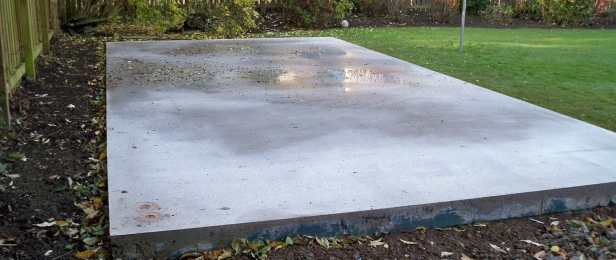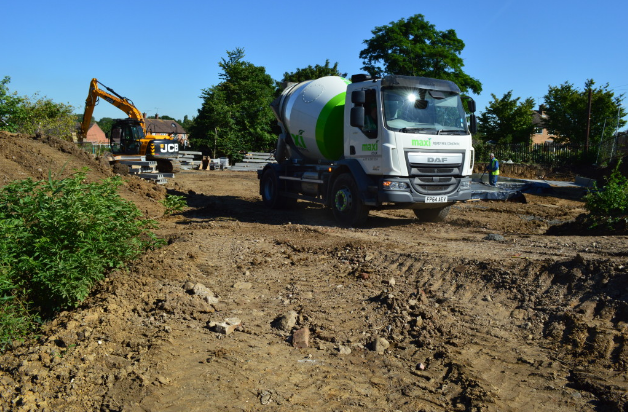How to Lay the Perfect Concrete Shed Base …
Important events have taken place in sheds over the years.
William Harley and Arthur Davidson used theirs to build the legendary motorcycle. Winner of two Nobel Prizes, Marie Curie, carried out most of her groundbreaking work with radiation in a shed.
There are many uses for sheds but what they all have in common is the need for a base that is strong, solid and secure.
A concrete shed base – the perfect solution …
Concrete bases will withstand all types of weather and protect the shed floor from water damage.
And our own Minimix Concrete is just the thing for DIY enthusiasts or projects needing small amounts of concrete. It will provide your shed with a durable and long-lasting foundation.
To begin, it’s vital to make a good, firm base for your shed. If the base isn’t level and secure, then it will be difficult to assemble the building. Doors will not fit into doorways and holes will not be lined up correctly for screws to be inserted.
Overall, the life and quality of your shed will be impaired by a poorly laid base. Yes, it’s all about the preparation, as with many things.
Think carefully about the location of your shed base …
There shouldn’t be any trees or walls too close to the structure. Tree roots can be a structural issue and a narrow gap between a shed and a wall or fence will make applying wood treatment to the shed tricky. Don’t leave it til next summer to work this out!
Consider how accessible the shed needs to be. Will you be carrying heavy items in and out? What facilities are needed? If you require water or electricity, this can also have an impact on where the shed is located.
Bear in mind that a concrete shed base takes longer to build than other types, as a sub-base is necessary.
Concrete cannot be directly laid onto soft ground.
This means scraping off the top layer of soft soil and vegetation. And you need to construct formwork, which is a frame to support the concrete while it dries and sets. It’s not advisable to lay a concrete base in wet or freezing conditions.
Are you building a large concrete base?
Then divide the area into sections.
Concrete will start to set after a couple of hours, therefore you need to ensure you can finish an area within that time.
And, it may sound obvious but we all know someone who’s been caught out… Always start at the furthest point so you don’t have to walk over wet concrete.
Once the sub-base is prepared and formwork erected, pour in the concrete.
Then …
- Remove air pockets by pushing a shovel blade up and down.
- Spread the concrete using a shovel or a rake.
- Using a tamping board (a piece of timber) pack down the concrete to produce an even surface.
- Level the surface and remove excess concrete with the tamping board.
- To prevent cracking, cover the finished base with a raised polythene sheet.
- Generally, you can walk on the concrete after three days and remove the formwork after five.
And there you have it – the perfect concrete shed base.
When it comes to how to build your shed, that’s another blog entirely!
If you need more advice about concrete bases for your shed, please contact us and we’ll do our best to help.







